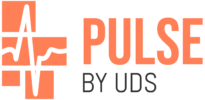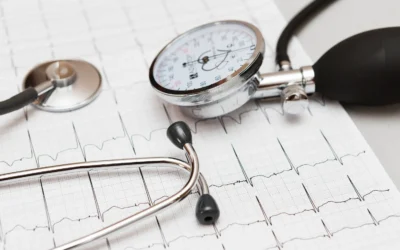Heart disease remains the leading cause of death worldwide, with heart attacks (myocardial infarctions) being one of the most severe and life-threatening cardiovascular events. Despite ongoing medical advancements and widespread public health initiatives, myths and misconceptions about heart attacks persist. These misunderstandings can be dangerous, influencing how people assess their risk, recognize symptoms, and seek treatment. In some cases, believing these myths can mean the difference between life and death.
Misinformation can lead individuals to underestimate their risk factors, delay medical intervention, or adopt ineffective preventive measures. A false sense of security can prevent early diagnosis and prompt treatment, both of which are crucial for improving survival rates. The goal of this article is to debunk five of the most common myths surrounding heart attacks, providing accurate, evidence-based insights to help people make informed decisions about their heart health. By separating fact from fiction, we empower individuals to take proactive steps in preventing heart disease and responding effectively to heart attack symptoms when they arise.
In This Article
Myth 1: “Heart Disease Runs in My Family, So There’s Nothing I Can Do”
It is a widely held belief that if a person’s parents or grandparents had heart disease, they are destined to suffer the same fate. While genetics can play a role in increasing the risk of heart disease, lifestyle factors have a far greater impact on cardiovascular health. In other words, having a family history of heart disease does not mean a heart attack is inevitable—rather, it highlights the importance of proactive prevention.
Research shows that individuals with a strong family history of heart disease who adopt a heart-healthy lifestyle can cut their risk significantly. A 2020 study published in the New England Journal of Medicine found that people with a genetic predisposition to heart disease who followed a healthy lifestyle—including not smoking, maintaining a healthy diet, exercising regularly, and managing cholesterol and blood pressure—had a nearly 50% lower risk of cardiovascular events compared to those with poor lifestyle habits (Khera et al., 2020).
Key factors within personal control include:
- Diet: Consuming a heart-healthy diet rich in fruits, vegetables, whole grains, and lean proteins can help manage cholesterol and blood pressure.
- Exercise: Engaging in at least 150 minutes of moderate-intensity aerobic activity per week strengthens the heart and improves circulation.
- Smoking Cessation: Smoking is a major risk factor for heart disease. Quitting smoking reduces the risk of heart attacks, even for those with a family history.
- Regular Health Screenings: Checking blood pressure, cholesterol levels, and blood sugar regularly helps detect problems early, allowing for timely intervention.
Rather than resigning to fate, individuals with a family history of heart disease should take their genetic predisposition as a call to action—one that requires vigilance, lifestyle modifications, and proactive healthcare management.
Myth 2: “I Don’t Need Medication for My Cholesterol; Diet and Exercise Are Enough”
While a healthy diet and regular physical activity are essential for heart health, they may not always be enough to manage cholesterol levels, particularly for individuals with high-risk profiles. Many people believe they can lower their cholesterol solely through lifestyle changes, but for some, genetics, age, or other medical conditions necessitate medication.
Statins and other cholesterol-lowering medications play a crucial role in reducing LDL (bad cholesterol), decreasing the likelihood of plaque buildup in arteries, and ultimately preventing heart attacks. Studies indicate that statins can lower the risk of heart attacks by as much as 25% to 30%, especially in individuals with high LDL cholesterol or those who have already had a cardiac event (Ference et al., 2019).
For some individuals, diet and exercise alone may not be sufficient due to conditions such as familial hypercholesterolemia (FH), a genetic disorder that leads to dangerously high cholesterol levels regardless of lifestyle. Without medication, individuals with FH remain at a significantly increased risk of heart attacks at a young age.
That being said, lifestyle modifications should always be the first line of defense. However, it is essential to recognize when medical intervention is necessary. Consulting a physician and undergoing routine cholesterol checks will help determine whether lifestyle changes alone are sufficient or whether medication is needed to achieve optimal heart health.
Myth 3: “I’ll Know If I’m Having a Heart Attack Because I’ll Have Chest Pain”
Many people assume that heart attacks always present with dramatic chest pain—often described as a crushing sensation in the chest, similar to what is depicted in movies. However, heart attack symptoms can be far more subtle and vary significantly between individuals. In some cases, a heart attack may occur with little or no chest pain at all.
Symptoms of a heart attack can include:
- Shortness of breath – A sudden inability to catch one’s breath, even when resting, can be an early warning sign.
- Nausea and vomiting – These symptoms are often mistaken for indigestion or food poisoning, particularly in women.
- Pain in areas other than the chest – Discomfort may radiate to the arms, jaw, neck, back, or stomach.
- Lightheadedness or dizziness – A feeling of faintness can occur as the heart struggles to pump blood effectively.
Women, in particular, are more likely to experience atypical heart attack symptoms, such as extreme fatigue, nausea, and back or jaw pain. A 2021 study published in Circulation found that nearly 50% of women who suffered a heart attack did not experience classic chest pain (Mehta et al., 2021).
Misinterpreting symptoms or waiting for “textbook” chest pain before seeking medical attention can result in life-threatening delays. If any unusual symptoms arise, particularly in individuals with known heart disease risk factors, immediate medical evaluation is critical.
Myth 4: “Smoking Only Affects the Lungs, Not the Heart”
While smoking is commonly associated with lung diseases such as chronic obstructive pulmonary disease (COPD) and lung cancer, it is also a major contributor to heart disease and heart attacks. Smoking damages blood vessels, accelerates plaque buildup in arteries, increases blood pressure, and promotes blood clot formation—all of which significantly heighten the risk of heart attacks.
According to the Centers for Disease Control and Prevention (CDC), smoking increases the risk of heart disease by 2 to 4 times and is responsible for about one in every four cardiovascular disease-related deaths (CDC, 2022). Even exposure to secondhand smoke has been shown to increase the likelihood of heart attacks.
Quitting smoking has immediate and long-term benefits, including:
- Improved circulation – Within 20 minutes of quitting, blood pressure and heart rate begin to normalize.
- Lower heart attack risk – Within a year, the risk of coronary heart disease is cut in half compared to that of a smoker.
- Reduced blood clot risk – Smoking cessation decreases the tendency for blood to clot, lowering the likelihood of heart attack or stroke.
No amount of smoking is safe, and switching to “light” or “low-tar” cigarettes does not reduce cardiovascular risk. The only effective strategy is complete cessation.
Myth 5: “Heart Disease Only Affects Men”
For decades, heart disease has been perceived as a “man’s disease,” leading many women to overlook their risk. In reality, heart disease is the leading cause of death for both men and women. However, due to differences in symptom presentation, women are often underdiagnosed or experience delays in receiving appropriate treatment.
Studies show that women tend to experience heart attacks about 10 years later than men, often due to the protective effects of estrogen before menopause. However, after menopause, their risk rapidly increases. Women are also more likely to have heart attacks without severe chest pain, instead experiencing symptoms such as extreme fatigue, nausea, shortness of breath, and dizziness.
Raising awareness about heart disease in women is crucial. Routine checkups, lifestyle modifications, and recognizing the unique symptoms of heart attacks in women can help reduce mortality rates.
Conclusion
Heart attack myths can have dangerous consequences, leading to misdiagnosis, delayed medical treatment, and a false sense of security. By dispelling these common misconceptions, individuals can take more informed steps toward heart disease prevention and ensure they recognize symptoms early. A proactive approach—including regular screenings, lifestyle modifications, and immediate response to warning signs—can significantly reduce the risk of heart attacks and improve long-term health outcomes.
References
Centers for Disease Control and Prevention. (2022). Smoking and heart disease. U.S. Department of Health & Human Services. Retrieved from https://www.cdc.gov/tobacco/campaign/tips/diseases/heart-disease-stroke.html
Ference, B. A., Ginsberg, H. N., Graham, I., Ray, K. K., Packard, C. J., Bruckert, E., … & Catapano, A. L. (2019). Low-density lipoproteins cause atherosclerotic cardiovascular disease: Evidence from genetic, epidemiologic, and clinical studies. European Heart Journal, 40(22), 2765–2776. https://doi.org/10.1093/eurheartj/ehz402
Khera, A. V., Emdin, C. A., Drake, I., Natarajan, P., Bick, A. G., Cook, N. R., … & Kathiresan, S. (2020). Genetic risk, adherence to a healthy lifestyle, and coronary disease. The New England Journal of Medicine, 375(24), 2349–2358. https://doi.org/10.1056/NEJMoa1605086
Mehta, L. S., Beckie, T. M., DeVon, H. A., Grines, C. L., Krumholz, H. M., Johnson, M. N., … & Wenger, N. K. (2021). Acute myocardial infarction in women: A scientific statement from the American Heart Association. Circulation, 133(9), 916–947. https://doi.org/10.1161/CIR.0000000000000351










0 Comments